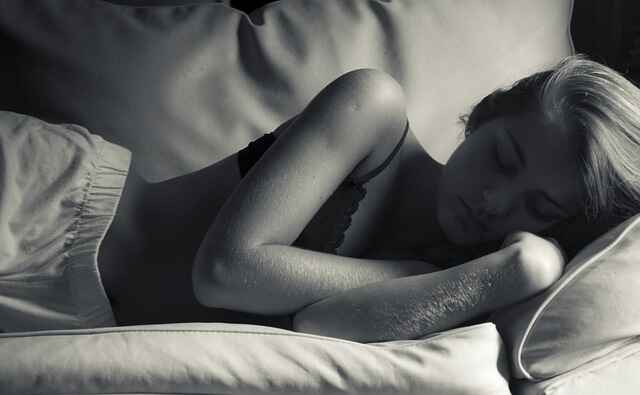What is Parasomnia?
Parasomnia is a sleep disorder that involves unusual and unwanted physical events or experiences that disrupt your sleep. Parasomnias can occur before or during sleep or during awakening from sleep. If you have parasomnia, you may have abnormal movements, talk, express emotions, or do unusual things. You are really asleep, even though your bed partner may think you are awake. (Source)
Parasomnias are grouped according to the stage of sleep in which they occur. There are two main stages of sleep:
- Non-rapid eye movement (Non-REM) sleep and
- Rapid eye movement (REM) sleep.
Also Read: Narcolepsy: Symptoms, Causes, Prevention, and Treatment
What are the Types of Parasomnia
Parasomnias that occur during non-REM sleep include:
Sleep terrors: If you experience this sleep disorder, you suddenly wake up in a terrified state. You may scream or cry in fright. Sleep terrors are usually short (30 seconds) but can last up to several minutes. Other features of this disorder are a rapid heartbeat, open eyes with dilated pupils, rapid breathing, and sweating.
Sleepwalking: If you sleepwalk, you get out of bed, moving around with your eyes open, but you’re actually sleeping. You may mumble or talk. Sleepwalking can be dangerous and lead to injury because you are not aware of your surroundings. You may bump into objects or fall. (Source)
Confused arousal: If you have this sleep disorder, you appear to be partially awake, but you are confused and disoriented in time and space.
Sleep-related eating disorder: If you have this sleep disorder, you eat and drink when you are partially awake. Dangers include eating inedible or toxic food, eating unhealthy or too much food, or getting injured while preparing or cooking food.
Parasomnias that occur during REM sleep include:
Nightmare Disorder: These are vivid dreams that cause feelings of fear, dread, or anxiety. You may feel a threat to your survival or safety. If you wake up during your nightmare, you can describe your dream in detail. Nightmare disorder is likely to occur if you are stressed or experiencing a traumatic event, illness/fever, extreme fatigue, or after drinking alcohol.
Recurrent Isolated Sleep Paralysis: If you have this sleep disorder, you cannot move your body or limbs during sleep. Sleep paralysis can be stopped if your partner talks to you or touches you in bed.
REM sleep behavior disorder: If you have this sleep disorder, you act out, and vocalize like talking, cursing, laughing, screaming, or making aggressive movements. This sleep disorder is more common in older adults.
Other parasomnias include:
Exploding head syndrome: If you have this sleep disorder, you will hear a loud or explosive sound in your head when you fall asleep or wake up.
Sleep-related hallucinations: If you have this sleep disorder, you experience hallucinations when you fall asleep or when you wake up. You may see things, hear things, feel things, or sense movement that isn’t really there.
Sexsomnia: Individuals with this sleep disorder engage in sexual behavior during sleep. These may include intercourse, masturbation, sexual assault, cuddling with a partner in bed, or sexual displays. (Source)
Symptoms:
- Difficulty sleeping through the night.
- Waking up confused or disoriented.
- Being tired during the day.
- Finding cuts and bruises on your body that you can’t remember the cause of.
- Visualizing movements, expressions, vocalizations, or actions as told to you by your partner in bed that you do not remember.
Treatment:
Treatment begins with identifying and treating other sleep problems and any other health problems, as well as reviewing medications that may trigger parasomnias.
General treatment strategies for both non-REM and REM sleep disorders are as follows:
- Practice good sleep hygiene habits like the sleep of 7-9 hours/per night, turning off lights, TV, and electronic devices, keeping the room temperature cool, avoiding caffeine, and strenuous exercise before bed.
- Maintain your regular sleeping and waking patterns. Have a consistent bedtime and wake-up time.
- Limit or avoid alcohol or recreational drugs.
- Take all prescribed medications as directed by your healthcare provider.
Home Remedies (Safety Measures):
- Lock or remove all dangerous or sharp objects from the bedroom.
- Safe table lights.
- Use floor mats to prevent injury in the event of a fall.
- Decorate the edges of the bedside furniture.
- Install window and door alarms for sleepwalking.
- Sleep in separate beds if the person with parasomnias exhibits aggressive behavior such as punching or kicking.
Prevention:
Although some causes of parasomnias are less likely to be prevented, such as those caused by neurological diseases, mental health problems, or heredity, others can be prevented by following some of the same treatment approaches discussed.
These includes:
- Getting seven to nine hours of sleep a night
- Maintaining a consistent bedtime and wake-up time
- Limiting alcohol and recreational drug use.
- Ask your healthcare provider to review your current medications if they disrupt sleep. If this is the case, different medications may be prescribed.
Also Read: Bruxism: Symptoms, Causes, Prevention, and Treatment
Facts You Must Know About This Sleeping Disorder
Parasomnias are more common in children than in adults. Non-REM sleep disorders are more common in children than REM disorders. The most common parasomnias in children under 15 are confused excitement, sleepwalking, sleep terror, and nightmare.
Parasomnias are more often seen in children who have neurological or psychiatric health problems, including epilepsy, and attention deficit hyperactivity disorder.
Other Sources: Research Paper, Literature





